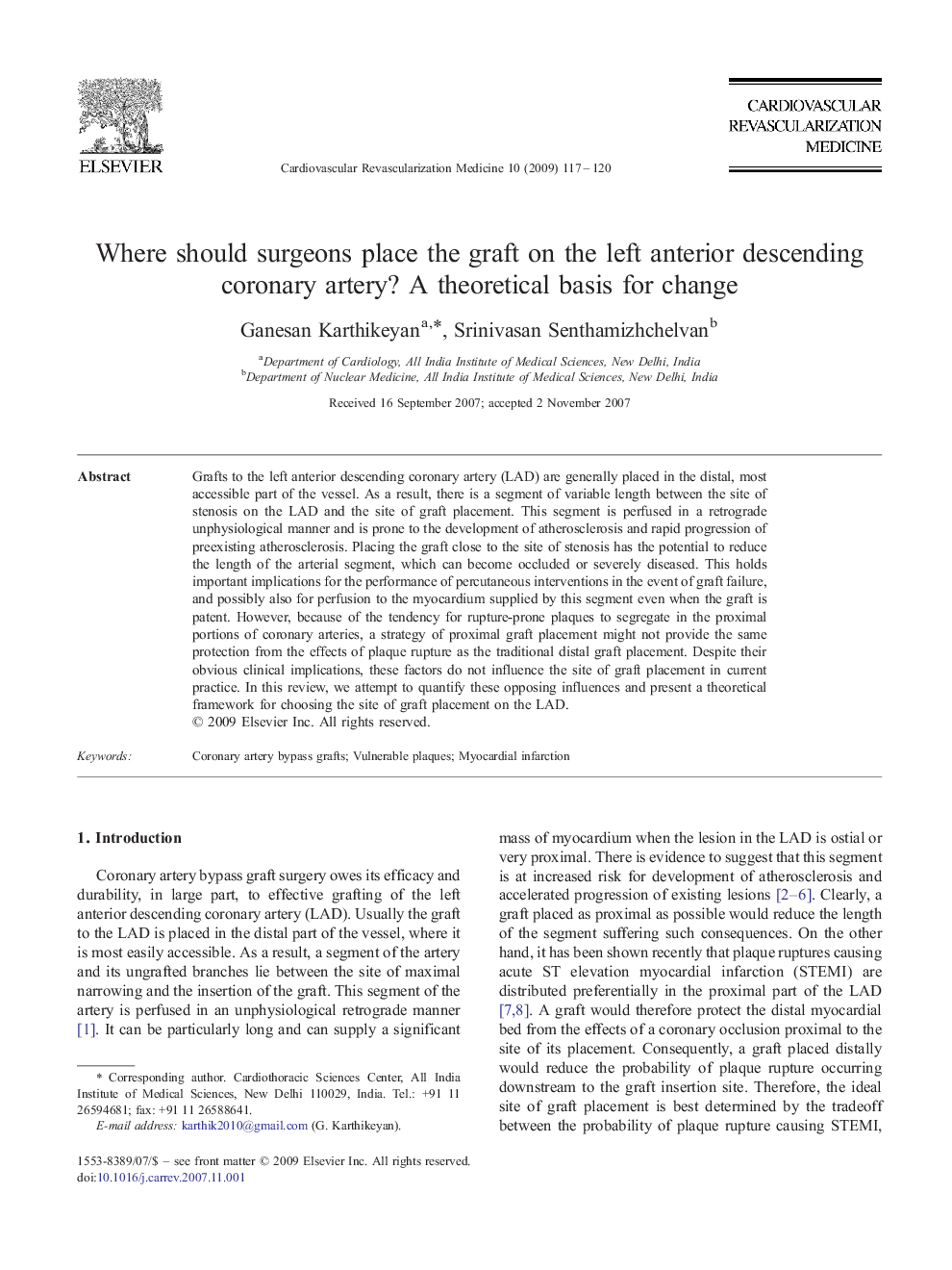| Article ID | Journal | Published Year | Pages | File Type |
|---|---|---|---|---|
| 2838133 | Cardiovascular Revascularization Medicine | 2009 | 4 Pages |
Grafts to the left anterior descending coronary artery (LAD) are generally placed in the distal, most accessible part of the vessel. As a result, there is a segment of variable length between the site of stenosis on the LAD and the site of graft placement. This segment is perfused in a retrograde unphysiological manner and is prone to the development of atherosclerosis and rapid progression of preexisting atherosclerosis. Placing the graft close to the site of stenosis has the potential to reduce the length of the arterial segment, which can become occluded or severely diseased. This holds important implications for the performance of percutaneous interventions in the event of graft failure, and possibly also for perfusion to the myocardium supplied by this segment even when the graft is patent. However, because of the tendency for rupture-prone plaques to segregate in the proximal portions of coronary arteries, a strategy of proximal graft placement might not provide the same protection from the effects of plaque rupture as the traditional distal graft placement. Despite their obvious clinical implications, these factors do not influence the site of graft placement in current practice. In this review, we attempt to quantify these opposing influences and present a theoretical framework for choosing the site of graft placement on the LAD.
